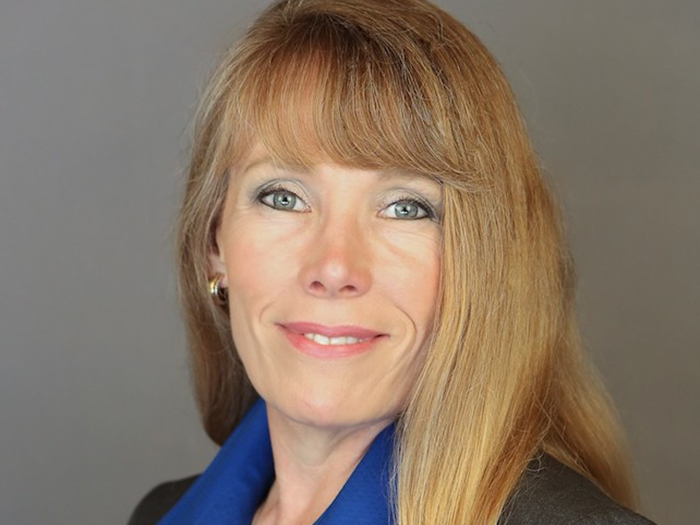Navigating the AI Revolution: A Conversation with CorVel CEO Michael Combs

AI, natural language processing and machine learning are all terms we’ve come to know throughout the workers’ comp space. Generative AI, however, was barely on the general public’s radar at the beginning of 2023.
Yet in just a few fast-paced months, the technology has become a key focus for C-suites across industries, including workers’ comp.
CorVel CEO Michael Combs sat down with Risk & Insurance’s national workers’ comp editor, Michelle Kerr, to talk about how CorVel is approaching the opportunities and challenges that come along with rapid technology disruption and how it might shape the future of workers’ compensation altogether.
For CorVel, Combs said, the most important consideration is being intentional and thoughtful about the way generative AI is applied.
While the technology is new and exciting, it’s crucial to keep the focus on improving processes to best serve injured workers as well as claims professionals.
The time may indeed be now for the workers’ comp industry to embrace AI’s evolution, but it’s still important we approach it in a thoughtful, strategic manner, said Combs.
The following is an edited partial transcript of their conversation.
Risk & Insurance: As an industry veteran looking at the workers’ comp industry from a very high level, what’s your take on what’s happening right now, technology-wise?
Michael Combs: I was asked very recently if I view generative AI as something that’s going to level the playing ground for the large risk management vendors and more mom-and-pop vendors.
And my answer has already changed. The cost is not going to be trivial. To leverage the technology in ways that are effective, enterprise-worthy, robust and valid … it will not be trivial.
The greater concern is, do these technologies create the pathway for different entities that have not been in risk management to enter risk management?
My perspective is that our industry will not embrace that readily. I don’t see near-term concerns [about] Amazon saying, “Hey, we can do that too.” But longer-term, I believe there’s a potential for many industries, including ours, to be disrupted by new players.
R&I: Clearly CorVel is working to stay ahead of the curve. But we both know the industry as a whole has a reputation for being slow to change. Do you think workers’ comp, as an industry, is ready to pivot and adapt as quickly as necessary?
MC: It will require entities such as CorVel to be very intentional with how we’re proceeding.
[We’re focused on] enhancing decision support for the people who are making claim decisions: “Here’s additional information; here’s additional insight for your consideration.”
We’re nowhere close, within our industry, to having systems that are making decisions. To reiterate — it’s decision support, providing the risk professional with additional information to consider in their decision-making process.
We are still looking to the claims professional to consider what’s presented to them in this context and make the decision based on the information.
For the objective tasks in claims management — those things that the claims professional does the same way every time, all day long — I believe a vast majority of those can be automated. If it’s “x” criteria, this is a “y” decision.
The question to address then becomes about recognized, accepted caseloads. If we talk about indemnity claims, say we target [caseloads of] 120-125. Might that increase to 200 or perhaps even 300 if you have an effective decision-support system?
Today, it would be a really tough thing to present to any prospective partner, “Our claim loads are 300, and we can do a good job at that.”
But do I see that in the future? There’s the potential. As for proven results, proven outcomes within our industry, I believe those will be incremental — adoption will take time.
R&I: Can you tell me about the most common use cases for generative AI and what the limitations are?
MC: The answer I give you today will likely be very different than the one I’ll give in just a few months.
The use cases that we’re actively focused on currently are being able to summarize medical documents [and] claim information, and to present concise information [with] all of the germane points to the claims professional.
With each process, we’re presenting, “Here’s the document, here’s the summarization,” and validating whether we’ve captured the essence of the document.
It’s inappropriate at this point to blindly trust the output. You may have heard about a recent legal case that was presented [using ChatGPT] — it was determined that all of the cases cited were “hallucinations” … meaning completely made up, in the new vernacular.
R&I: What other use cases are being discussed for the longer term?
MC: One of the areas that’s emerging that is particularly exciting to me is a concept of fine-tuning. [Ed. note: fine-tuning, in this context, means applying the data gleaned from solving one problem toward solving a similar or related problem.]
What I envision is fine-tuning a large language model in a private space with our historical claim information — of which we have volumes.
But then how would we apply that?
Look at how a seasoned professional makes their decisions. Take a claims professional that’s been in the space for two, three decades. They know what to look for, they know what the red flags are, they know what the indicators are that this claim might be at risk of having a different outcome than was originally expected.
And that’s part of the value of mining historical information — leveraging the history and identifying the indicators that, given the activity on a claim, it’s at risk of having an outcome that’s not optimal or varies from the expected.
If we consider some of the challenges we face as an industry — we have a retirement of seasoned people stepping out of the industry, and it’s difficult to bring people into the industry.
So an area we’re looking at is leveraging the historical decision-making of those professionals to provide [another layer of] decision support to new claims professionals.
Is that a way in which we can bring the new claims professionals up to speed more quickly? We believe there is real potential for that as well.
[But] I would consider that a perhaps limited use case. Play it forward and look at the outliers. Let’s say [hypothetically] we lost all of the veteran professionals in our industry. They all simply retired tomorrow.
Well, we’ve got all this historical data, and that can inform the decision-making of the new group of people coming into the industry.
But our field is not static. Legislation changes, the industry changes. After two years [without fresh data from seasoned professionals], I would say that’s not going to be particularly useful information, or at least a lot less useful.
R&I: What do you see as the key risks for CorVel as an organization? What are the things that you are talking about that other organizations need to be aware of and watchful for?
MC: To do it properly, to implement robust systems leveraging new technology, that’s not a trivial expense. It’s not something you can plug in, turn on and expect everything to work perfectly. That’s just not how these things work.
There’s [significant] productionizing to ensure the processes, the controls are in place that ensure that on an ongoing basis, the results, those insights that are being presented are valid.
And I would say there’s a certain amount of risk [in the potential for] claims professionals beginning to trust more than they should — that feeling of, “Hey, the system will always alert me of this, that or the other thing.”
There’s a balance. We want to leverage a system appropriately, where it makes sense.
I would add that there’s perhaps a bigger risk in not having a seat at the table if you’re not embracing the technology. My expectation is that with generative AI — with AI in general — we will reduce the total cost of risk; we will improve outcomes.
I see the potential with the application of these technologies for CorVel to be a driver of industry change.
People ask, “When’s the right time to jump in and embrace AI, to embrace generative AI?” And my perspective is that while [heavy investment] in AI even five years ago might have seen small returns, I believe that if you’re electing to be on the sidelines now, things are changing so quickly that it’s not going to be possible to catch up.
Not unless you’re not embracing, exploring, understanding the potential and tracking the technology as it evolves.
I believe that if you’re leveraging those technologies, you’re going to be generating better results for your partners. If you’re not, eventually you won’t have a seat at the table. &










